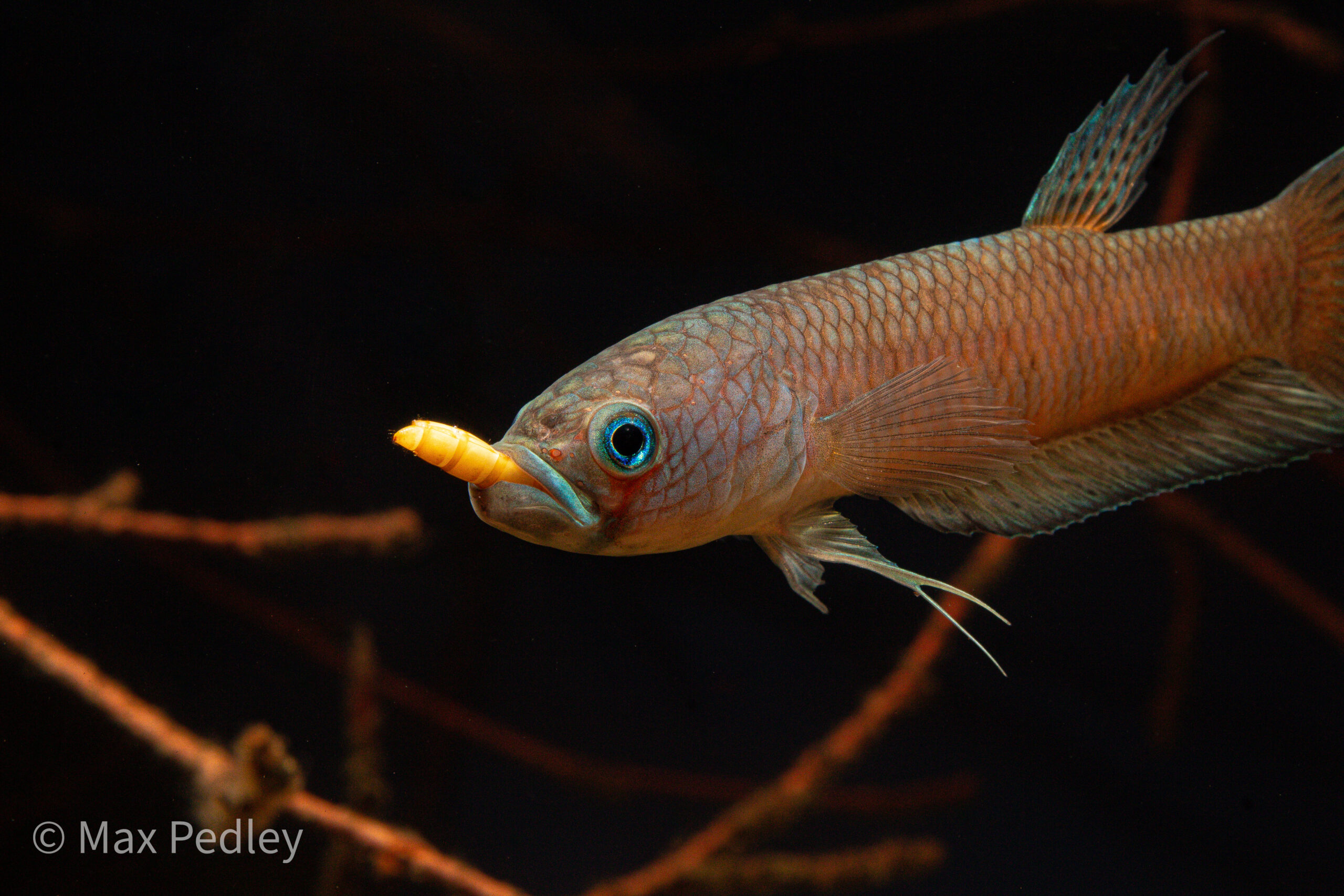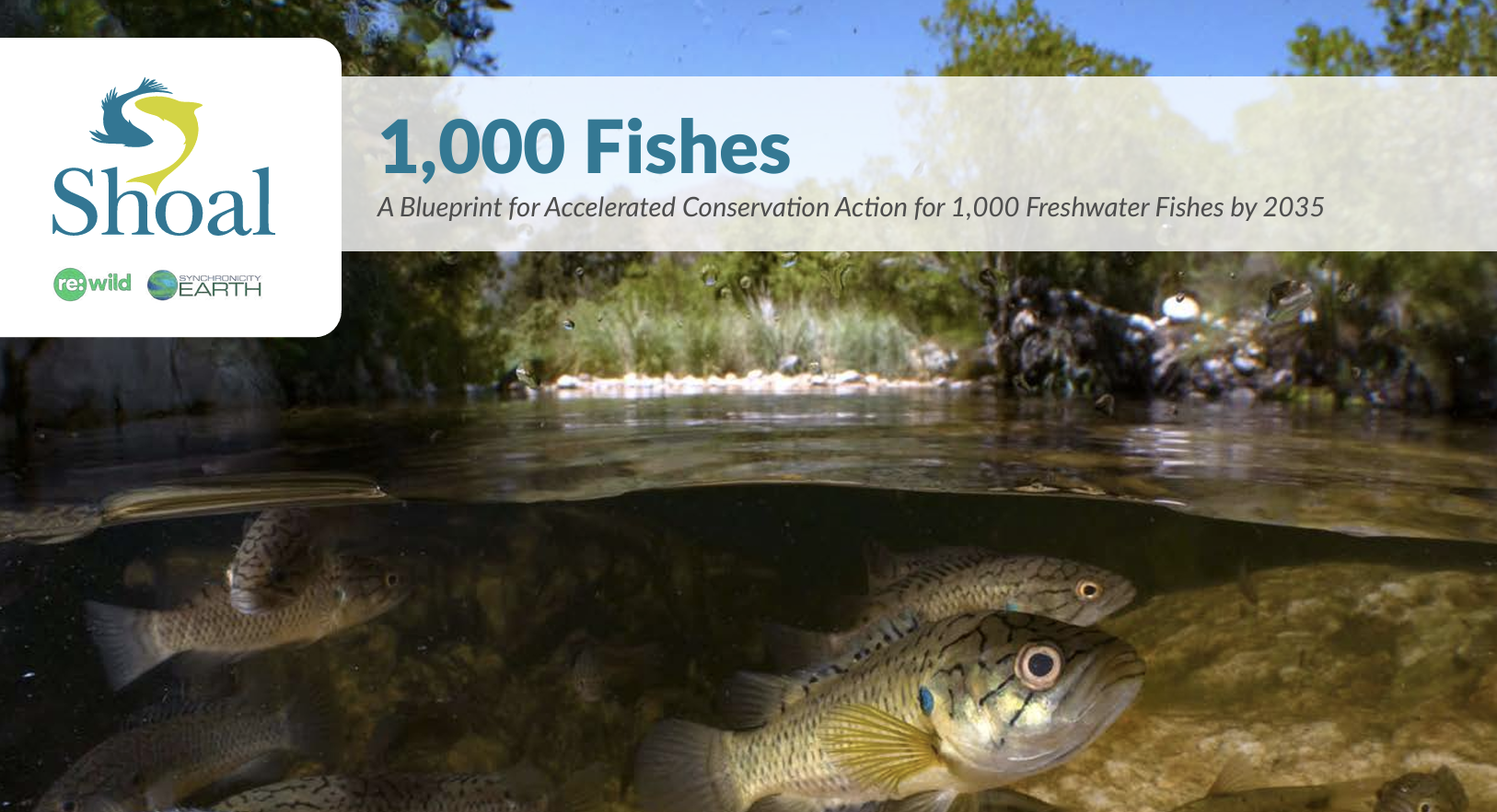© Nonn Panitvong
Assessing the extinction risk of all species of freshwater fishes globally: an interview with Catherine Sayer
Catherine Sayer is the Freshwater Programme Officer in the IUCN Biodiversity Assessment and Knowledge Team, based at The David Attenborough Building in Cambridge, UK. She is currently working to get the extinction risk of all species of freshwater fishes globally assessed for the IUCN Red List, which will fill in knowledge gaps on which regions have the highest numbers and proportions of threatened freshwater fishes, giving a greater understanding of where conservation programmes are likely to have most impact.
SHOAL caught up with her to learn more about the IUCN Red List assessment process and get some advice on how researchers and taxonomists can conduct Red List assessments themselves.
Tell us a bit about your background and your current role. And what led you to do what you do now?
I have been working for IUCN since 2014 based in Cambridge, UK in the (recently renamed) Biodiversity Assessment and Knowledge Team, part of the IUCN Centre for Science and Data. I was initially part of the Red List Unit, but since 2016 have been focussing on freshwater biodiversity, now with the role of Programme Officer.
My background is quite broad, with an undergraduate degree in Natural Sciences (Zoology) and an MSc in Ecology, Evolution and Conservation, but over the last few years I’ve become much more familiar with the fascinating and often overlooked world of freshwater! At present, my work primarily focusses on increasing the representation of freshwater species on the IUCN Red List of Threatened Species™, through assessment of species of freshwater decapods (crabs, crayfishes, and shrimps), fishes, molluscs, odonates (dragonflies and damselflies), and aquatic plants. This is important given the unprecedented level of threat to the freshwater realm, which is incredibly species rich (supporting over 10% of all known species and 30% of vertebrates, despite covering less than 1% of the Earth’s surface), and of great value to human livelihoods in terms of ecosystem services.

Catherine Sayer © Catherine Sayer
You have recently done a gap analysis to see which species still need to be assessed for the Red List. What does this involve?
IUCN is working to complete a global assessment of all freshwater fish species for the IUCN Red List, and I recently completed a gap analysis to identify which freshwater fish species still need to be assessed. To do this I compared a list of all described freshwater fish species from Eschmeyer’s Catalog of Fishes, which is the standard taxonomic source for fishes on the Red List, to a list of all species with assessments published on the IUCN Red List, or under way through ongoing projects. The resulting list (after accounting for quite a few taxonomic discrepancies and changes!) includes all “gap species” of freshwater fish that still need to have Red List assessments completed. Many of these species are those that are relatively new to science, having been recently described, such that our target list is growing as researchers and taxonomists identify and describe more species!
And what does a Red List assessment involve?
An IUCN Red List assessment tells us the relative extinction risk of a species. Each assessment includes an account with information on the distribution (including a distribution map), population, habitats and ecology, use and trade, threats, and conservation and research actions relevant to the species. This information is then used to assign species to a category of extinction risk based on data driven and objective criteria. The criteria are designed to identify species at higher relative risk of extinction based on their population size, population trend, or geographic range, together with information on threats acting on the species. Species assessed as Vulnerable (VU), Endangered (EN), or Critically Endangered (CR) are described as threatened. However, the Red List isn’t just limited to those species at high risk of extinction – it includes information on all species that have been assessed against the categories and criteria, including those assessed as Least Concern (LC) and considered to be at low relative risk of extinction, for example.
We work with species experts and conservation scientists to draft Red List assessments based on the best available knowledge at the time of assessment. Anyone with knowledge of the global population of a species can be an assessor, but in practice most assessments are drafted by members of the IUCN Species Survival Commission (SSC) Specialist Groups. Once drafted, assessments are reviewed by independent experts to ensure the data presented are correct and complete. Prior to the COVID-19 pandemic, these first steps (drafting and review) often took place in workshops where we gathered species experts to assess the freshwater species native to a particular region and/or taxonomic group, but at present assessments are completed remotely by individuals or groups of experts collaborating online. Once reviewed, assessments are submitted to the IUCN Red List Unit in Cambridge, UK for final consistency checks before being published on the IUCN Red List website, which is recognised as an online scientific journal.
Once published, IUCN Red List data are available for many uses by a number of sectors: education and public awareness, scientific analyses, influencing conservation policy, informing conservation planning and priority setting, assisting with private sector decision making, and more. To search for a species on the IUCN Red List, simply enter its scientific or common name into the search bar at the top of the website. If the species has been assessed for the Red List, you will be taken to its species account.

Participants of the Sunda Basin Freshwater Fishes Red List Review Workshop held at Wildlife Reserves Singapore, Singapore in January 2019 © Catherine Sayer

Screenshot of a Red List assessment
Approximately how many freshwater fish species are assessed each year?
On the current version of the Red List (version 2021-3), there are assessments of 11,291 species of freshwater fish, representing over 60% of all described freshwater fish species. This total is the result of over 20 years of Red Listing work, but efforts and number of species assessed have greatly increased in recent years with support of initiatives such as the IUCN–Toyota Partnership, which have enabled us to increase the geographic coverage of the Red List with respect to freshwater fishes. In 2020, assessments of close to 1,800 freshwater fish species were published, primarily from the Sunda Basin and New Guinea, and in 2021, assessments of over 900 freshwater fish species were published, including species from Brazil, the Caribbean, and the Philippines. This year, we are hoping for many more species to be published, the majority of which will be native to South America.
And approximately what percentage of these are threatened with extinction?
Of the freshwater fish species assessed for the Red List so far, a best estimate of 30% are considered to be threatened with extinction, meaning they are assessed as Vulnerable (VU), Endangered (EN), or Critically Endangered (CR). This estimate isn’t yet based on complete data (given all freshwater fishes haven’t yet been assessed for the Red List), but indicates a higher percentage threatened with extinction than for birds, reptiles, and mammals, all of which have been assessed. Of the threatened freshwater fish species, 636 (6% of the total) are assessed as CR, and 943 (8%) are assessed as EN. It’s also important to note that a high proportion (21%) of the freshwater fish species assessed so far have been categorised as Data Deficient (DD). This means that there is insufficient information available to indicate their relative extinction risk, bringing some uncertainty into these estimates.

Nothobranchius elucens was described by Béla Nagy in 2021, and assessed for the Red List by Nagy and Watters in the same year as Vulnerable based on its restricted geographic range (see here). © Béla Nagy

Bagarius vegrandis was described by Ng & Kottelat in 2021. An assessment of the species completed by Ng has been submitted to the IUCN Red List Unit for publication. © Nonn Panitvong
Shoal are keen to encourage researchers and taxonomists to conduct Red List assessments when they discover and describe new species. Can you offer any advice on how they can best do this?
I am also keen to encourage researchers and taxonomists to assess species for the IUCN Red List after describing them! I work with a handful of species experts that do this already, but would welcome if this practice became more widespread. Lots of the information that is provided as part of the description of a species is also relevant to a Red List assessment, for example the known distribution and habitats of the species. Additionally, those involved in the discovery and collection of a species are generally familiar with activities occurring in the distribution of the species that might be observed to (or can be inferred to based on knowledge of similar species) have negative effects on the species, therefore representing known or potential threats. Together, this provides a good basis for a Red List assessment.
Some taxonomic descriptions already contain sections on the conservation status of a species, but these don’t constitute an official Red List assessment – Red List assessments are only official once they have been through the full IUCN Red List assessment process and been published on the IUCN Red List website. This is to ensure that the IUCN Red List categories and criteria have been applied correctly and consistently. Although not always the case, many recently described species are assessed as either Data Deficient (DD) or threatened, given they are often relatively poorly known or occur in poorly known areas, and may be rare or have highly restricted distributions.
For any researchers interested to assess their newly described freshwater fish species for the Red List (or any species for which they have the relevant knowledge), I would advise that they contact me and I will be able to guide them through the Red List assessment process. Alternatively, there are lots of helpful resources available via the Red List website, including a free online Red List training course.

Paratrygon orinocensis was described by Loboda, Lasso, Rosa & Carvalho in 2021. The species is currently being assessed for the Red List by the IUCN SSC Shark Specialist Group. © LOBODA, LASSO, ROSA & DE CARVALHO





